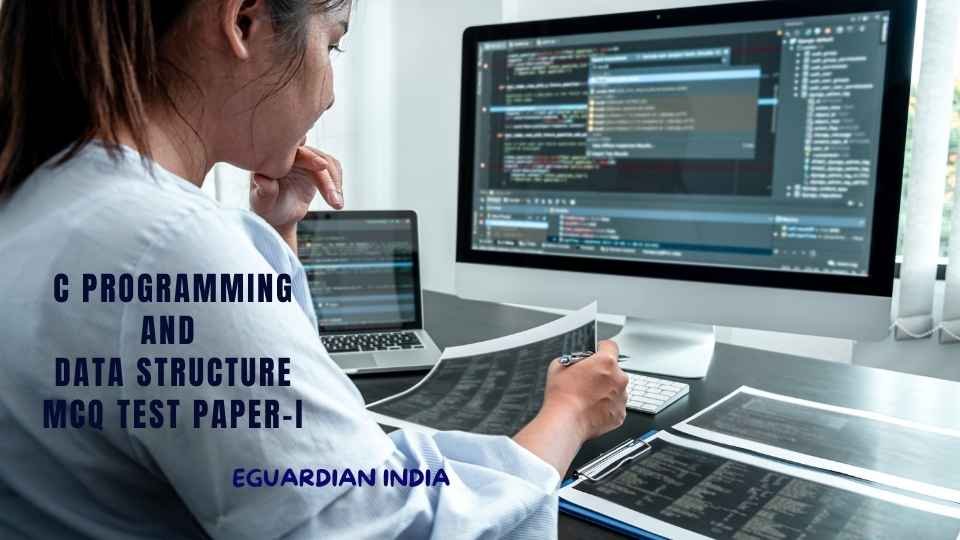Preparing for exams can be a daunting task, especially when it comes to subjects like Multimedia. With so much information to cover, it is crucial to have the right resources at hand. If you are in search of Fundamentals of Multimedia MCQ with answers specifically tailored for the subject of, then you have come to the right place.
This article aims to provide you with a valuable resource in the form of a PDF that contains an extensive collection of MCQs along with their corresponding answers. So whether you are a student looking to test your knowledge or an educator seeking additional material for your students, this article will prove beneficial in helping you prepare effectively for your upcoming exam on Fundamentals of Multimedia.

Fundamental of Multimedia MCQ questions and answers
1. The first mass communication medium was ___.
Ans. Newspaper
2. In 1945, the Memex was developed by ___.
Ans. Vannevar Bush
3. MPEG-1 was approved as an international standard for digital video in the year ___.
Ans. 1993
4. WWW stands for ___.
Ans. World Wide Web
5. Is Text one form of media?
Ans. True
6. Auditory media triggers our ___ senses.
Ans. Hearing
7. ___ media refers to how the information is represented internally by the computer.
Ans. Representation media
8. Is pen drive a storage media?
Ans. True
9. Video is dynamic media.
Ans. True
10. Multimedia application should process at least one static and one dynamic medium.
Ans. True
11. The property of jumping or navigating from one point within a presentation to another point without much delay is called ___.
Ans. Non-linearity
12. Compact Disc is a (sequential/ random access) device. (Tick the correct answer).
Ans. Random
13. Multimedia information is divided into individual units called packets.
Ans. True
14. A sequence of individual packets transmitted in a time-dependent manner is called ___.
Ans. Datastream
15. A clock signal is used in ___ transmission mode.
Ans. Synchronous
16. ___ transmission mode gives both maximum and minimum end-to-end delay.
Ans. Isochronous
17. Multimedia is used in designing architectural parts.
Ans. True
18. Multimedia can be used to promote tourism.
Ans. True
19. An analogue signal varies continuously over space and/or time.
Ans. True
20. The maximum displacement of the oscillating particle from its mean position is known as____.
Ans. Amplitude
21. Match column [A] with column [B]:
| Column [A] | Column [B] |
| Text | Time-dependent media |
| Video | Discrete media |
| Graphics | Continuous media |
| Sound | Time-independent media |
Ans.
| Column [A] | Column [B] |
| Text | Time-independent media |
| Video | Continuous media |
| Graphics | Discrete media |
| Sound | Time-dependent media |
22. Time-independent media is also called ___ media.
Ans. Discrete
23. ASCII stands for ___.
Ans. American Standard Code for Information Interchange
24. Formatted texts are those which contain not only alphanumeric characters but also some control characters.
Ans. True
25. Hypertext is unformatted text.
Ans. False
26. HTML stands for ___.
Ans. HyperText Markup Language
27. The pictures that depict real-world situation captured by a camera are called graphics.
Ans. False
28. Each pixel value represents a particular colour.
Ans. True
29. A photograph is an analogue image and a scanner can convert it into a digital image.
Ans. True
30. In CMYK colour models, CMYK stands for ____.
Ans. Cyan-Magenta-Yellow-blacK
31. Photosite stores the ___ that falls on it.
Ans. level of intensity
32. CCD converts ____ into ___.
Ans. level of intensity, electric charge
33. Resolution is measured in ___.
Ans. pixels
34. In a raster scan, an image is subdivided into a sequence of horizontal lines known as___.
Ans. Scan lines
35. When the electron beam is ON, the pixel is ___.
Ans. Activated
36. Image analysis is used to improve the quality of an image.
Ans. True
37. The size of the image can be calculated using the formula___.
Ans. spatial_resoultion * pixel_quantization
38. ___ is the number of oscillations completed in unit time.
Ans. Frequency
39. The first step towards the digitization of analogue signals is ___.
Ans. Discretization
40. Binary numbers comprise three distinct values.
Ans. False
41. Audio is a discrete media.
Ans. False
42. Sound is a result of a ___.
Ans. Vibration
43. We can hear the sound if it is within 20 to 20,000Hz.
Ans. True
44. Audio signal is digitized using pulse code modulation.
Ans. True
45. ___ is the number of times per second that samples are taken.
Ans. Sampling rate
46. CD-DA audio uses a sample rate of ___ samples per seconds.
Ans. 44,100
47. Digital samples of sound are generated using a synthesizer.
Ans. True
48. In ___ synthesizers patches are used.
Ans. Wavetable
49. Monophonic means it can play ___ note at a time.
Ans. One
50. The capability of producing two or more different instruments sound simultaneous is called ___.
Ans. Multitimbral
51. ___ is the measure of sound levels or intensity.
Ans. Amplitude
52. Hertz is the unit for ___.
Ans. Frequency
53. Greater the amplitude ___ will be the sound.
Ans. Louder
54. The MIDI device monitors all the channels and responds to all channel messages in case of Omni ____.
Ans. On
55. The status byte of the MIDI message is made of ___ bits.
Ans. Eight
56. ____ messages include a Manufacturer’s Identification code.
Ans. System exclusive messages
57. The ___ component does not contain colour information.
Ans. Luminance
58. The strength of the colour is represented by ___.
Ans. Saturation
59. In 4:2:2 format, the sampling rate used for luminance is ___.
Ans. 13.5 MHz
60. QCIF stands for ___.
Ans. Quarter Common Intermediate Format
61. Compression is applied prior to the transmission of information.
Ans. True
62. The decompression is performed at ___.
Ans. Decoder
63. ___ compression algorithm is said to be reversible.
Ans. Lossless
64. ___ encoding focuses on how the information is represented.
Ans. Entropy
65. The codeword generated using ___ encoding consists of two values – the character/bit and the number of occurrence of that character/bit.
Ans. Run-Length
66. Entropy is the minimum number of bits needed to represent a symbol.
Ans. True
67. In ___ encoding, the difference between the amplitude values is taken as codewords.
Ans. Differential
68. The lossy compression algorithm can be applied for the transmission of the text.
Ans. False
69. A binary tree is a tree having ___ children.
Ans. Two
70. In ___ encoding, the source string is separated into individual symbols/character.
Ans. Huffman
71. In ____ encoding, various segments are formed based on the probability of each character.
Ans. Arithmetic
72. In arithmetic coding, the value of codeword generated lies within [0, 1].
Ans. True
73. The receiver should have prior information about the codewords for decoding purpose.
Ans. True
74. If the sampling rate is increased then ___ is also increased.
Ans. Discrete samples.
75. Quantization levels refer to the number of different sample values that can be used to represent a digital quantity.
Ans. False
Conclusion
Preparing for an exam can be a stressful and overwhelming task. However, with the help of fundamental of multimedia MCQ questions and answers pdf, you can enhance your understanding and improve your chances of success.
The comprehensive range of questions in this pdf will test your knowledge and help you identify areas that require further revision. We hope that by sharing our MCQs on social media, you will help other students in their exam preparation journey as well.
Together, we can create a supportive and collaborative learning environment. So go ahead, share our MCQs and let’s make exam preparation easier for everyone!



